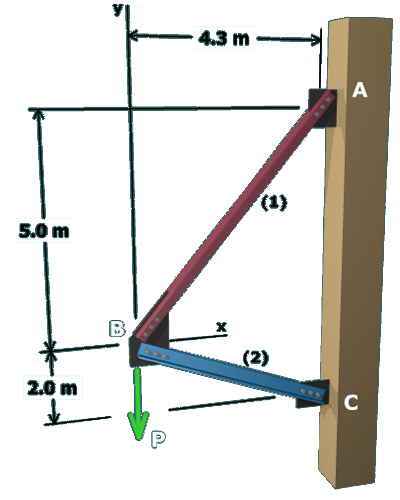Begin by considering the equilibrium of joint , noting that members (1) and (2) are two-force members. Two equilibrium equations, and , can be written for the forces acting at joint .
The two equilibrium equations contain three unknown forces: , , and . Three unknown forces cannot be determined from just two equations; therefore, additional information must be incorporated to solve the problem.
